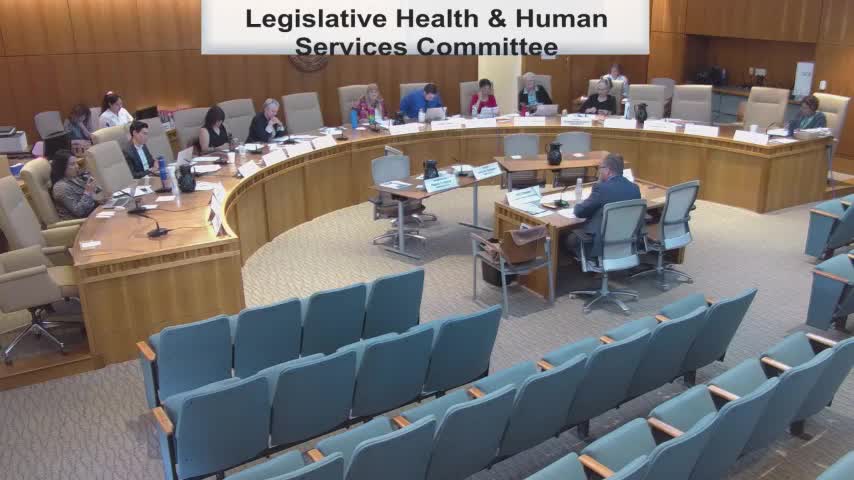Medicaid Authority Discusses Spending Growth and Future Enrollment Trends
June 27, 2025 | Legislative Health & Human Services, Interim, Committees, Legislative, New Mexico
This article was created by AI summarizing key points discussed. AI makes mistakes, so for full details and context, please refer to the video of the full meeting. Please report any errors so we can fix them. Report an error »

In a recent meeting of the Legislative Health and Human Services Committee, held on June 27, 2025, discussions centered on the evolving landscape of Medicaid and behavioral health funding in New Mexico. The meeting highlighted significant changes in funding distribution and the implications for Medicaid recipients in the state.
One of the key topics was the transition from a collaborative agency model to a direct funding approach from the health care authority. This shift aims to streamline the distribution of funds, although the exact model for this new system is still under development. The committee emphasized the importance of adapting to these changes to ensure effective management of resources allocated for Medicaid and behavioral health services.
The meeting also addressed the growth in Medicaid behavioral health spending over recent years. Presentations indicated that a substantial portion of this funding has been directed towards outpatient services, with a smaller allocation for inpatient care. This trend reflects a broader commitment to enhancing access to mental health services, which has become increasingly critical in light of rising demand.
Committee members raised questions about the current enrollment trends in Medicaid. Recent figures indicate that enrollment peaked during the pandemic, reaching nearly one million recipients, but has since decreased to approximately 814,000. This fluctuation is attributed to various factors, including Medicaid expansion under the Affordable Care Act and potential changes in federal work requirements that may further impact enrollment numbers.
The discussions underscored a shared goal among committee members to transition individuals out of Medicaid and into more sustainable health care solutions. However, the anticipated federal provisions could lead to further declines in enrollment, prompting ongoing concerns about the future of Medicaid support in New Mexico.
As the committee continues to navigate these changes, the implications for health care access and funding distribution remain a priority. The next steps will involve closely monitoring enrollment trends and adapting strategies to meet the evolving needs of the community.
One of the key topics was the transition from a collaborative agency model to a direct funding approach from the health care authority. This shift aims to streamline the distribution of funds, although the exact model for this new system is still under development. The committee emphasized the importance of adapting to these changes to ensure effective management of resources allocated for Medicaid and behavioral health services.
The meeting also addressed the growth in Medicaid behavioral health spending over recent years. Presentations indicated that a substantial portion of this funding has been directed towards outpatient services, with a smaller allocation for inpatient care. This trend reflects a broader commitment to enhancing access to mental health services, which has become increasingly critical in light of rising demand.
Committee members raised questions about the current enrollment trends in Medicaid. Recent figures indicate that enrollment peaked during the pandemic, reaching nearly one million recipients, but has since decreased to approximately 814,000. This fluctuation is attributed to various factors, including Medicaid expansion under the Affordable Care Act and potential changes in federal work requirements that may further impact enrollment numbers.
The discussions underscored a shared goal among committee members to transition individuals out of Medicaid and into more sustainable health care solutions. However, the anticipated federal provisions could lead to further declines in enrollment, prompting ongoing concerns about the future of Medicaid support in New Mexico.
As the committee continues to navigate these changes, the implications for health care access and funding distribution remain a priority. The next steps will involve closely monitoring enrollment trends and adapting strategies to meet the evolving needs of the community.
View full meeting
This article is based on a recent meeting—watch the full video and explore the complete transcript for deeper insights into the discussion.
View full meeting
